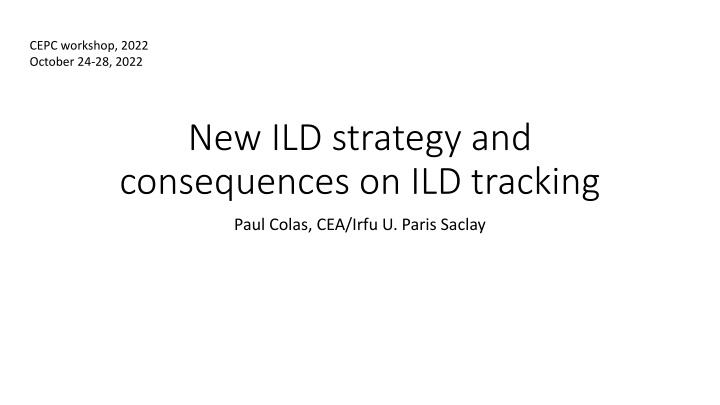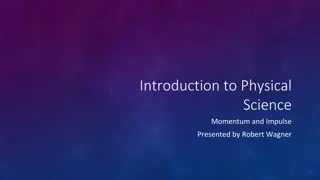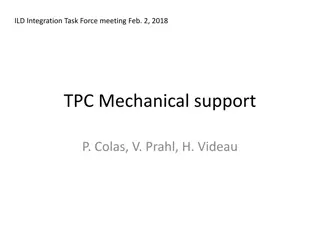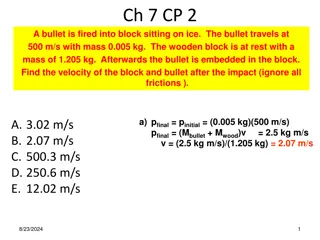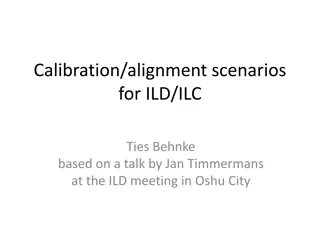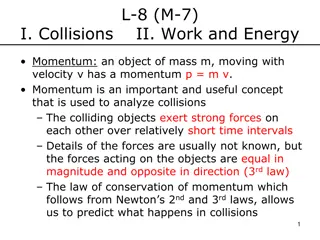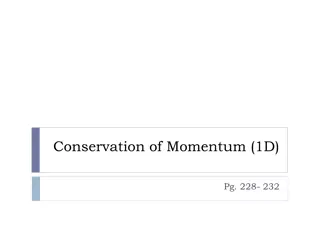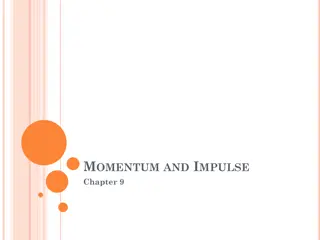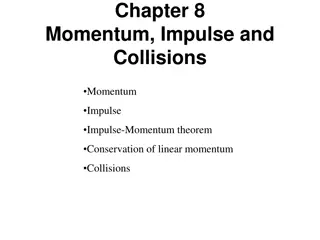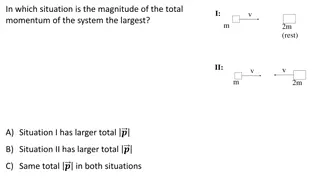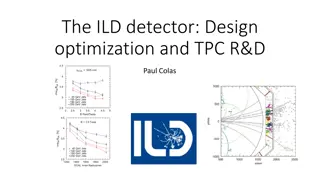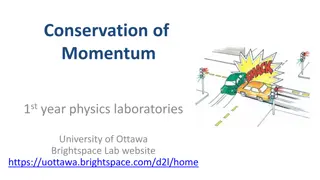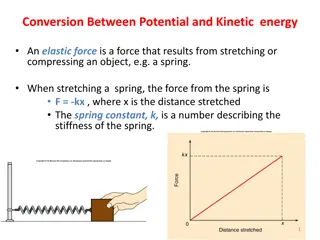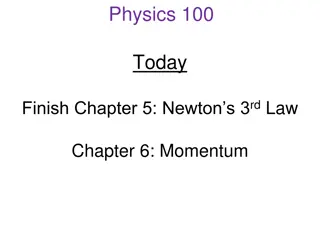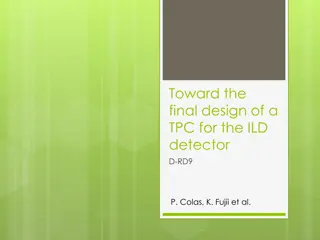New ILD Strategy: Consequences on ILD Tracking and Momentum Resolution
The ILD collaboration is adapting its strategy for potential circular colliders like FCC or CEPC, discussing challenges in tracking distortion correction, momentum resolution requirements, and handling various backgrounds. The focus is on optimizing the ILD design to meet the evolving collider landscape's demands.
Download Presentation

Please find below an Image/Link to download the presentation.
The content on the website is provided AS IS for your information and personal use only. It may not be sold, licensed, or shared on other websites without obtaining consent from the author.If you encounter any issues during the download, it is possible that the publisher has removed the file from their server.
You are allowed to download the files provided on this website for personal or commercial use, subject to the condition that they are used lawfully. All files are the property of their respective owners.
The content on the website is provided AS IS for your information and personal use only. It may not be sold, licensed, or shared on other websites without obtaining consent from the author.
E N D
Presentation Transcript
CEPC workshop, 2022 October 24-28, 2022 New ILD strategy and consequences on ILD tracking Paul Colas, CEA/Irfu U. Paris Saclay
Introduction The ILD design includes a pixel vertex detector, followed by a silicon tracker, and a TPC. The main motivation for the TPC is to allow a dE/dx measurement on individual tracks, for particle ID purposes It also allows to have up to ~200 points on each track, which gives good V0 and kink reconstuction The TPC must also provide, together with the silicon tracker, a momentum resolution which allows the Higgs recoil peak against Z-> to be seen : p/p2 = 2.10-5 GeV-1 . This requires a tracker with 200 m point resolution and systematics on the sagitta < 20 m 26/10/2022 P. Colas - New ILD strategy and consequences on tracking 2
Material budget (ILD, CLD) 26/10/2022 P. Colas - New ILD strategy and consequences on tracking 3
Introduction In 2022, the ILD collaboration discussed a new strategy adapted to the possibility of ILC not being the first constructed collider. In this event, ILD should adapt to a circular collider, FCC or CEPC. At such a collider, the luminosity at the Z peak is ~200 1034 cm-2s-1 per IP. This corresponds to 65 kHz of hadronic Zs, with an average 20 charged tracks and O(0.2 fC/cm3) charge density in a typical TPC gas with 0.5 m/s ion velocity. This leads to 300 m distortions of the tracks, from primary ionization alone. Gating is not possible at circular colliders, given the continuous beams Is it possible to correct for such distortions? What is the momentum resolution needed at the Z peak ? 26/10/2022 P. Colas - New ILD strategy and consequences on tracking 4
Manqi Ruan at ILD meeting October 2 26/10/2022 P. Colas - New ILD strategy and consequences on tracking 5
Manqi Ruan at ILD meeting October 2 radial 26/10/2022 P. Colas - New ILD strategy and consequences on tracking 6
Background at ILC Beamstrahlung-induced : Incoherent pair production Beamline muons (horizontal mips) Neutron backgrounds from the beam dump (gas of neutrons, bouncing nuclei in the gas, especially H UVs and soft X rays : they ionize the gas and produce snow (randomly localized hits) Beamstahlung radiation : X-rays MeV to tens of MeV: they produce e+e- pairs curling in the detector magnetic field Background at FCC Beamstrahlung-induced : Incoherent pair production : Increasing with energy Less beamline muons and neutrons than at ILC Synchrotron radiation : UVs and X-rays 26/10/2022 P. Colas - New ILD strategy and consequences on tracking 7
Background studies at BELLE II Real accelerator SuperKEKB, goal lumi of 80.1034 cm-2s-1 Initial background at start (2018) was 1 to 3 orders of magnitude higher than expectations. Main backgrouds were Touschek electrons (expected to decrease as E3)and beam gas. Synchrotron radiation (keV to 100 keV) in the final focusing is also huge At the (4S), the ionization from physics if probably overwhelming for a TPC, however under discussion in BELLE II (A. L schke-Centeno, P. Lewis). 26/10/2022 P. Colas - New ILD strategy and consequences on tracking 8
Pair production background Studied with GUINEA-PIG MC (ILC, D. Schulte 2003, A. Vogel 2007) and GUINEA PIG++ (FCC, E. Perez 2019, A. Ciarma 2022) ILC 250 GeV B=3.5 T FCC 91.2 GeV B=2 T 26/10/2022 P. Colas - New ILD strategy and consequences on tracking 9
At ILC 250 GeV (Higgs factory) the ionization in the TPC is dominated by the beam background. This produces a significant space charge (O(0.06 fC/cm3) which causes distortions up to 60 m. Gating is necessary to limit the ions flowing back from the amplification region 26/10/2022 P. Colas - New ILD strategy and consequences on tracking 10
CONCLUSIONS The possibility to use a TPC at the future Higgs factory is appealing (particle ID for free, low material), but requires a large amount of difficult studies to meet physics requirements of Z peak at the highest luminosity of circular colliders. Ion backflow suppression without loss of resolution Possibility to correct for distortions (on average? or event by event?) Especially difficult at the Z peak at the highest luminosity What is our requirement for resolution at the Z peak? Update all beam background estimates at the HZ energy. I wish to thank my ILD, CEPC, LCTPC, Saclay and KEK colleagues for enriching discussions. Thanks to the organizers of the workshop for inviting me. 26/10/2022 P. Colas - New ILD strategy and consequences on tracking 11
